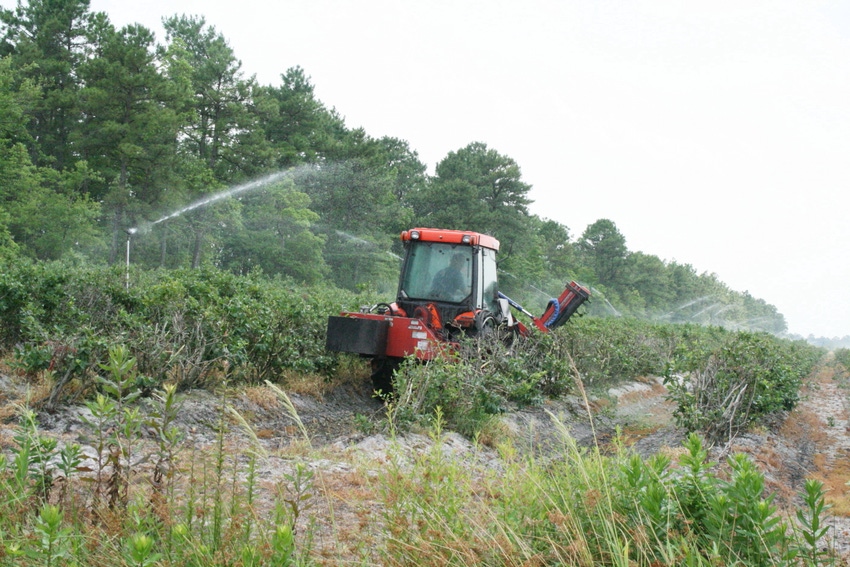June 27, 2014

Just a few months ago, the outlook for berry crops in the Carolinas looked bleak indeed, thanks to the combination of unseasonal cold in late winter with inundating rains as harvest approached. But after a late start, the berry crops in these two states performed well in yield and quality.
The strawberry crop, in fact, was enormous, especially early in the season.
“It posed major challenges for our state’s farmers,” said Barclay Poling, executive director of the North Caroline Strawberry Association. “The plants were absolutely loaded with fruit, and berries ripened all at once rather than gradually over a period of time.”
Fields that would typically yield 2,000 pounds per acre per week had in many cases escalated by mid-May to 5,000 to 6,000 pounds, if not higher, he explained. The only way to deal with that was to attract customers to pick those berries, and farmers came up with a bold step to encourage that.
“If a person went to a pick-your-own farm and bought three buckets of strawberries, we would give them a fourth,” said Mitchell Wrenn of Wrenn Farms in Zebulon, N.C. “We encouraged customers to give the free bucket to someone in need. It wasn’t a big cost item for any of us because we had way too much fruit and had to do something with it.”
Looking back, he thinks it was a relatively inexpensive way of garnering some good public relations for the state industry. The idea was originated and publicized by the N.C. Strawberry Association, of which Wrenn is the president.
Blueberry’s Golden Age
The North Carolina blueberry crop appeared likely to be one of the best in years even though there had earlier been the same concerns as for strawberries.
“The late freeze delayed budding by about two weeks,” said North Carolina Agriculture Commissioner Steve Troxler in mid June. “Fortunately, the cold snap did not damage the crop, and fresh North Carolina blueberries should be available into July.”
General harvest got going the last week of May.
Troxler attributes part of the state’s success in blueberries to the opportunity over the years to plant improved varieties.
Now, by the way, is the Golden Age of blueberry development, said Bill Cline, North Carolina State University Extension plant pathologist.
“Several improved cultivars developed for the South have performed really well under North Carolina conditions, and these bushes are reaching the age where they represent a majority of the berries harvested,” Cline said.
Cultivated varieties such as New Hanover and Columbus, both developed by N.C. State University, are replacing older varieties originally released from the 1950s through the 1970s. Additional varieties developed in Florida, Georgia and New Jersey also have proven well-suited for North Carolina’s climate and soil conditions during trial runs at the research station.
About three-fourths of the state’s blueberries are sold fresh at pick-your-own farms, farmers markets or retail stores, said the North Carolina Department of Agriculture.
Showers in South Carolina
In South Carolina, too, the strawberry crop was excellent. South Carolina Department of Agriculture marketing specialist Tré Coleman said some strawberries came to the farmers market in Florence as late as June 9, which was a little later than usual.
“Blueberries are coming off now too and don’t seem to have been held back at all by the cold,” he said. “The ‘row crop’ vegetables like zucchini and squash are also doing well.”
There had been some timely showers in early and mid June that had not been too heavy, and that is leading to growth for our butterbeans and peas, which should be coming to the market soon.
There weren’t many South Carolina peaches for sale through mid June. But Coleman thinks—based on observation and the reports that he has received—that despite losing some blooms to late winter cold, the state peach crop should be of at least average size.
If any part of the South Carolina peach crop suffers a yield loss to the cold, it would be in the western, more mountainous counties, rather than in the Coastal Plain, he said.
In other news about berry crops in North Carolina and South Carolina:
Jeremy Pattison has left the position of North Carolina State University Extension strawberry specialist and breeder for work in the industry. He had not been replaced at the time of this writing.
Barclay Poling has recently been named executive director of the North Carolina Strawberry Association, a new position. He was the North Carolina State University Extension strawberry specialist before Pattison.
Debby Wechsler gave up in February the position she held for 17 years of executive secretary of the North Carolina Strawberry Association (NCSA), said Wrenn. She continues as executive secretary of the North American Raspberry & Blackberry Association, a position she held along with the NCSA post for some time.
Wrenn told Southeast Farm Press in mid June that NCSA had tentatively offered the position of executive secretary to another individual, but other commitments may prevent that person from taking it. He also said that NCSA is prepared to work with North Carolina State University to help get a new Extension strawberry specialist.
About the Author(s)
You May Also Like




